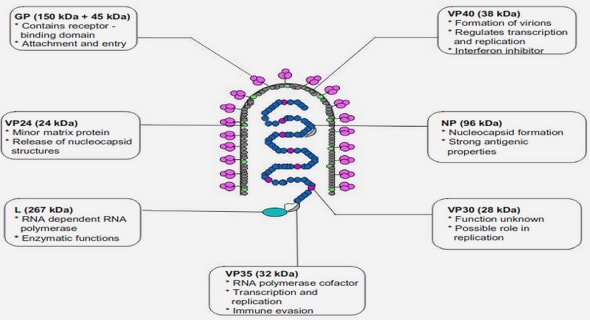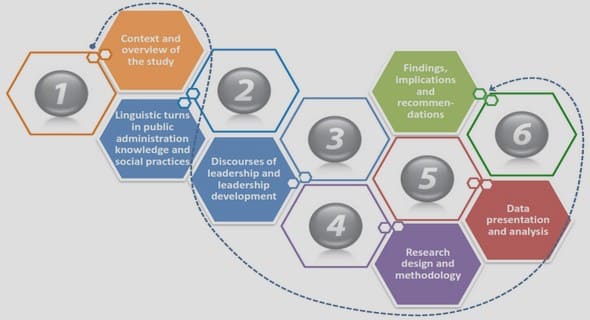Get Complete Project Material File(s) Now! »
Home sweet corner. A 400-Myr old but any rest housekeeping investment to accommodate arbuscules
After traversing the epidermis and outer cortical layers, AM fungal hyphae enter cortical cells via invagination of the plasma membrane that is suspected to proceed from fusion of PPA vesicles (Bonfante & Genre, 2008). Inside a cortical cell, the intracellular hypha branches repeatedly to develop the specialized tree-like structure, known as arbuscule, which is enveloped by an extension of the host plasma membrane, the periarbuscular membrane that separates the fungus from the plant cell cytoplasm. This delineates as depicted in Figure 1.4, the interface compartment, an apoplastic space that surrounds the fungus and mediates nutrient exchange (Bonfante & Genre, 2008). Although the composition of the apoplastic space is somehow reminiscent of that of the primary plant cell wall with cellulose, pectins and hemicellulose, a structured cell wall is not present, indicative of the specialized nature of this compartment (Balestrini et al., 2005).
Likewise, despite consisting of an extension of the plant plasma membrane, the periarbuscular membrane displays specific protein features compared to the host PM, including the presence of the AM symbiosis-specific phosphate transporters MtPT4 and OsPT11 (Harrison et al., 2002; Kobae & Hata, 2010), the AM-inducible ammonium transporter GmAMT4.1 (Kobae et al., 2010), STR half-ABC transpoters (Zhang et al., 2010; Gutjahr et al., 2012), and VAMP721d/e proteins (Ivanov et al., 2012). Imaging also revealed that the periarbuscular membrane is at least composed of two distinct specific protein-containing compartments, corresponding to an arbuscule-branch domain that specifically harbours MtPT4, OsPT11, GmAMT4, STR transporters and VAMP721s, as opposed to an arbuscule-trunck domain that contains the blue copper-binding protein MtBcp1 (of unknown function), which also localizes to the host PM .
Interior designers for membrane biogenesis and protein trafficking
As aforementioned (fungal entry), the pattern of impaired epidermal penetration together with lack of arbuscule in the cyclops and ccamk mutants, was also observed in Vapyrin knock-down plants (Feddermann et al., 2010; Pumplin et al., 2010). In petunia and barrel medic, Vapyrin was reported indispensable for arbuscule differentiation in cortical cells, whereas its function is conditional for epidermal colonisation at high infection pressure. Using confocal microscopy, it was shown that the cortical cells of the mutant were indeed colonized, but that arbuscule development was arrest at an early point of branching (Feddermann et al., 2010). By contrast, in wild-type colonized cells, Vapyrin become increasingly localized in areas of intense hyphal branching to membrane-bound structures associated with the tonoplast, referred to as tonospheres, which may function as a mobile reservoir of membrane material. This hypothesis could explain why Vapyrin is more critical in cortical cells than in epidermal cells, by reason of a more extensive need in membrane production (Pumplin & Harrison, 2009).
In the same line, aside from resulting in septated hyphopodia with aborted penetration attempts, inactivation of the membrane steroid-binding proteins MtMSBP1 leads to a decreased number of arbuscules, some of them having a distorted morphology, suggesting that alteration of sterol metabolism with regard to membrane biogenesis is required for fungal accommodation (Kuhn et al., 2010). In relation to protein trafficking, Takeda and co-workers investigated in L. japonicus the relevance for mycorrhizal development of two AM-specific subtilases, SbtM1 and SbtM3, by negatively interfering with their expression through RNAi (Takeda et al., 2009). Suppression of SbtM1 or SbtM3 caused a decrease in intra-radical hyphae and arbuscule frequency without affecting the number of fungal penetration attempts, indicating that the two subtilases play an indispensable role during the fungal infection process in particular arbuscule development. The predicted proteolytic activity of SbtM1 and SbtM3, together with their localization in the apoplastic perifungal and periarbuscular spaces, suggested that cleavage of structural proteins within and between plant cell walls by subtilases might be required for elongation of fungal hyphae in the intracellular space and for penetration into the host cell during arbuscule formation.
Interestingly, AM-induced proteases were found to be secreted at the symbiotic interface. Actually, when testing the functionality of the subtilase signal peptide by fusion to the N-terminus of Venus protein, strong fluorescence was detected around fungal hyphae traversing plant cells and in the periarbuscular space, suggesting first that protein trafficking towards the periarbuscular space follows the canonical secretory pathway, and second, that the increase in membrane surface during arbuscule development may cause a significant portion of trans-Golgi vesicles to fuse with the periarbuscular membrane, and then to redirect proteins entering the secretory pathway to the periarbuscular space (Takeda et al., 2009). Very recently, Ivanov and co-workers investigated whether an exocytotic pathway might similarly control the formation of the symbiotic interface in both RNF and AM symbioses (Ivanov et al., 2012).
Exocytosis that involves focalized fusion of transport vesicles (with a specific cargo) with their target (plasma) membrane, is mediated in plants by a group of proteins belonging to the VAMP72 (vesicle-associated membrane proteins), which have been shown to be recruited in the Arabidopsis interaction with biotrophic fungi (Kwon et al., 2008). Upon mining of M. EST and genome sequence data, a putative “symbiotic” VAMP721 subgroup, including MtVAMP721d and –e without Arabidopsis homologs, was retrieved as the best candidate to be involved in symbiosis-related membrane compartments. Localisation studies show that the corresponding proteins localize to over the periarbucular membrane, especially at the fine branches, and subsequent RNAi-based silencing of VAMP721d/e genes blocks symbiosome as well as arbuscule formation in RNF and AM symbiosis, respectively. It was thus concluded that arbuscule formation is specifically controlled by the MtVAMP721d/e-regulated exocytotic pathway whose switch-on allows the targeting of vesicles with a different cargo to facilitate the development of a symbiotic interface with specific protein composition. Overall, the current data confirm that the periarbuscular endomembrane compartment is apoplastic despite its intracellular nature (Ivanov et al., 2012).
Shopping centre addiction : the fuel dispenser
Regarding plant carbon delivery to the AM fungus, sucrose (Suc), which channels a substantial portion of the photosynthetic fixed CO2, is used for long-distance carbon and energy transport into diverse heterotrophic sinks and represents the preferred carbohydrate translocated to the mycorrhizal interface (Bucking & Shachar-Hill, 2005). Higher transcript levels of sucrose transporters (SUT), as well as accumulation of sucrose and monosaccharides in sink organs were observed in mycorrhized roots of tomato (Solanum lycopersicum) and white clover (Trifolium repens) plants, indicating an increased movement of sucrose from photosynthesizing leaves (Wright et al., 1998; Boldt et al., 2011). Very recently, the characterization of the complete sucrose transporter family from M. truncatula and the identification of two key members upregulated in mycorrhized plants (MtSUT1.1 and MtSUT4.1) reinforce this idea of an increased movement from source leaves towards mycorrhizzed roots (Doidy et al., 2012).
Interestingly, the overexpression of the phloem loading SoSUT1 of potato (Solanum tuberosum) shaped the plant-fungus interaction by increasing R. irregularis colonization, compared to WT plants, when high-phosphate conditions were applied (Gabriel-Neumann et al., 2011). The fact that no effects on mycorrhization rates were observed in low-phosphate conditions, nor when antisense inhibition lines of this transporter were assessed; coupled with previous evidences showing an altered leaf C-partitioning and tuber metabolism when this gene was overexpressed (Leggewie et al., 2003), might suggest a non-direct effect of SoSUT1 on the AM interaction. Additional evidences of transcriptional regulation of genes involved in sucrose transport were reported in the AM interaction between tomato plants and Glomus fasciculatum (Tejeda-Sartorius et al., 2008). Nevertheless, contrasting evidences on SUTs regulation have been reported for the LeSUT1 of tomato, which showed to be down-regulated in AM mycorrhized roots (Ge et al., 2008).
Because intra-radical fungal structures are unable to take-up Suc together with the lack of evidence in favour of Suc-cleaving activities in AM fungi, Suc is believed to be hydrolysed prior to fungal utilization by cytosolic Suc synthases (SucS), producing UDP-Glc and Fru, or invertases (Inv), producing Glc and Fru. Particularly, extracellular invertases have a key function in supporting increasing sink strength, a feature of mycorrhizal roots; and may thus directly deliver utilizable carbohydrates to the apoplast-located fungal structures. Unexpectedly, artificially augmented hexose availability to the AM fungus, obtained by yeast-derived apoplastic Inv active in the arbuscule interface of transgenic mycorrhizal M. truncatula roots, failed to improve AM colonization significantly (Schaarschmidt et al., 2007).
These data suggested that carbohydrate supply in AM cannot be improved by root-specifically increased hexose levels, implying that under normal conditions sufficient carbon is available in mycorrhizal roots. By contrast, transgenic tobacco plants expressing an inhibitor of Inv functioning showed reduced apoplastic invertase activities in roots that also had lower contents of Glc and Fru coupled to a diminished mycorhization, thus showing that the carbon supply in the AM interaction actually depends on the activity of hexose-delivering apoplastic invertases in roots (Schaarschmidt et al., 2007). Concomitantly, to study the relevance of the SucS-mediated symplastic sink near the plant fungus interface, Baier and co-workers (Baier et al., 2010) used M. truncatula lines displaying partial suppression of MtSucS1, the only MtSucS gene currently known as activated under endosymbiotic conditions and for which a role for biological N fixation in root nodules was demonstrated (Baier et al., 2007).
Antisensing MtSuc1 led to an internal mycorrhization-defective phenotype as inferred from reduced frequencies in internal hyphae, vesicle and arbuscule development. Strikingly, arbuscules were not only degenerating, similarly to the early symbiosome senescence observed in Rhizobium-inoculated MtSuc1-knockdown lines, but often showed a lower branching network, resulting in a reduced functional symbiotic interface also evident from the recorded down-regulation of periarbuscular membrane transcript markers. This phenotype, somehow reminiscent of that displayed in MtMTP4-repressed constructs (Javot et al., 2007), correlated with reduced phosphorus and nitrogen levels and was proportional to the extent of MtSuc1 knockdown, as represented in Figure 1.4. Overall, it was concluded that plant sucrose synthase MtSuc1 functioning is directly or indirectly a prerequisite, not to induce, but to sustain normal arbuscule maturation and lifetime (Baier et al., 2010).
The face pack of house-keepers: a plastid-derived colored and hormonal control.
Upon AM symbiosis, colonized cortical cells are known to accumulate within the plastids surrounding arbuscules two types of apocarotenoids (carotenoid cleavage products) of unknown function, which lead to the typical macroscopically visible yellow coloration of mycorrhizal roots, and are assumed to originate from a common carotenoid precursor (Fester et al., 2002; Floss et al., 2008). Namely, the chromophor of this yellow complex is an acyclic C14 apocarotenoid polyene called mycorradicin that occurs in a complex mixture of derivatives, coupled to the concomitant accumulation of C13 cyclohexanone apocarotenoid derivatives (Schliemann et al., 2006). To investigate the elusive role of cyclohexanone and mycorradicin accumulation in AM symbiosis, Floß and co-workers suppressed the expression of MtDSX2 (1-deoxy-D-ribulose 5-phosphate synthase) that catalyzes the first step of the plastidial methylerythritol phosphate (MEP) pathway, which supplies isoprenoid precursors in parallel to an alternative cytosolic pathway (Floss et al., 2008).
RNAi- mediated repression of MtDSX2 led to a strong and reproducible reduction in the accumulation of the two AM-inducible apocarotenoids coupled to a shift towards a greater number of older, degrading and dead arbuscules at the expense of mature ones. Overall, these data reveal a requirement for DXS2-dependent MEP pathway-based isoprenoid products to sustain mycorrhizal functionality at late stages of symbiosis. In accord with this view, Vogel and co-workers reported that a knock-down approach performed in tomato on the carotenoid cleavage dioxygenase 7 (cdd7) gene located downstream in the pathway of apocarotenoid biosynthesis resulted in major decreases in the levels of AM-induced apocarotenoids in cdd7 antisense lines, coupled to a decreased in arbuscule abundance (Vogel et al., 2010). Although the role of cyclohexanone and mycorradicin during AM symbiosis still remains to be solved, it turns out that a specific consequence of the absence of apocarotenoids might be the accumulation of older arbuscules (Floss et al., 2008). In this respect, a high exogenous supply of Pi in mycorrhizal petunia roots was found to repress genes involved not only in phosphate transport and intracellular accommodation, but also in carotenoid biosynthesis (Breuillin et al., 2010). Taken together, these data support a hypothesis according to which apocarotenoids sustain directly or indirectly arbuscule maintenance/functioning.
Finally, and as very comprehensively reviewed in (Hause & Schaarschmidt, 2009), the involvement of the plastid-located lipid-derived phytohormone jasmonic acid (JA) as a regulator of AM symbiosis has been observed in diverse plant species. Initially noticed from application experiments that resulted in a promotion of mycorrhizal root colonization, a positive effect of JA on AM symbiotic development was also drawn from the increased endogenous JA levels observed after the initial step of the symbiotic interaction, indicating that partner recognition may not be linked to the expression of JA-biosynthetic genes and to elevated JA levels. A functional demonstration for a role of JA in mycorrhiza establishment comes from a M. truncatula antisense line that displays a partial suppressed expression of MtAOC1, which encodes the JA-biosynthetic enzyme allene oxide synthase (AOC) (Isayenkov et al., 2005). The reduction in the amount of MtAOC protein through antisense-mediated suppression resulted in a decrease in endogenous JA level in mycorrhizal roots accompanied by an overall reduction in arbuscule frequency rather than to an abnormal infection process.
Immunocytology indicated that in mycorrhizal roots MtAOC clearly localizes to plastids that develop around arbuscules, whereas the cortex cells of nonmycorrhizal roots were label-free. Notably, the AOC protein also seems to be present in arbuscule-containing cells independent of their developmental stage, suggesting the absence of a relationship between JA synthesis and arbuscule maintenance. In this line, when considering genes the repression of which upon Pi fertilization may potentially affect AM colonization in petunia, a homologue of the JA-inducible JA2 transcript was slightly increased, in contrast to the phosphate-mediated suppression of those essential for symbiosis (Breuillin et al., 2010). Consequently, the petunia transcriptional Pi-related proxy rather sustains a helper/signalling effect of JA biosynthesis in mycorrhizal colonization rather than a prominent role of the phytohormone in sustaining AM functioning. Nonetheless, because jasmonates can affect mycorhization in multiple ways, including alteration in flavonoid biosynthesis, microtubular pattern, defence reaction, cytokinin action together with an increase in the stimulation of carbohydrate synthesis, additional experiments based on metabolite, protein and/or transcript profiling are required to elucidate the processes mediated by jasmonates during AM symbiosis (Isayenkov et al., 2005).
Table of contents :
Chapter 1.1 Proteins sustaining arbuscular mycorrhizal symbiosis: falling silent for function reveals a new generation of underground-working desperate housewives
Summary
I. Casting
II. Fashion victims: copy and paste for guest entry between AM symbiosis and more recently evolved plant interactions
1. The dress code to make friends: branching out before symbiont contact
2. Holding a reception
III. Home sweet corner. A 400-Myr old but any rest housekeeping investment to accommodate arbuscules
1. Gossip girls for signalization
2. Interior designers for membrane biogenesis and protein trafficking
3. On a permanent slimming diet: the phosphate price for success
4. Shopping centre addiction: the fuel dispenser
5. The face pack of house-keepers: a plastid-derived colored and hormonal control.
IV. The gardener, the chemist, and the trader as desperados’ serial lovers. -“Because mycorrhiza worth it”:
Chapter 1.2 Gel-based and gel-free quantitative proteomics approaches at a glance
Abstract
1- Introduction
2- Gel-based proteomics
2.1- Two-dimensional gel electrophoresis (2-DE): the workhorse of proteomics
2.2- Electrophoretic separations of native proteins
2.3- One-dimensional gel electrophoresis (1-DE): the birth of proteomics
3- Proteomics: from gel-based to gel-free techniques
4- Peptide fractionation procedures
4.1- Ion-exchange chromatography (IEC)
4.2- Reversed-phase chromatography (RP)
4.3- Two-dimensional liquid chromatography (2D-LC)
4.4- OFFGEL electrophoresis (OGE)
5- MS-based quantitation
6- Overview of label-based proteomic approaches
6.1- Chemical labelling
6.1.1- Proteolytic labelling
6.1.2- Isotope-Coded Affinity tags (ICAT)
6.1.3- Isotope-Coded Protein Labelling (ICPL)
6.1.4- Isobaric Tags for Relative and Absolute Quantification (iTRAQ).
6.1.5- Tandem Mass Tag (TMT)
6.2- Metabolic labelling
6.2.1- Stable Isotopic Labelling with Amino Acids in Cell Culture (SILAC)
6.2.2- 14N/15N labelling
7- Label-free quantitative proteomics
7.1 Spectral counting
7.2- Spectral peak intensities
7.3- Data-independent analysis (DIA)
8- Conclusion
Acknowledgements
Objectives and outline
Results & discussion
Chapter 2 Optimization of iTRAQ labelling coupled to OFFGEL fractionation as a proteomic workflow to the analysis of microsomal proteins of Medicago truncatula roots
Abstract
Background
Results and discussion
Experimental design
In-filter protein digestion
Peptide isobaric tagging
Peptide OGE fractionation
iTRAQ impact on peptide OGE fractionation
Acidic and basic amino acid distribution per peptide
iTRAQ impact on peptide elution time
Conclusions
Methods
Biological material and growth conditions
Microsomal protein extraction
In-solution protein digestion
iTRAQ peptides labelling
Peptide OGE
LC-MS/MS analysis
Abbreviations
Competing interests
Authors’ contributions
Acknowledgements
Chapter 3 Performance of isobaric labelling in quantitative proteomics of arbuscular mycorrhized Medicago truncatula roots
Abstract
Introduction
Materials and methods
LC-MS/MS analysis
Results and discussion
Proteomic analysis design for in-depth differential quantitative study.
Comparison of peptide and protein identification results
Protein abundance changes and iTRAQ labelling accuracy.
Conclusion and future prospects
Chapter 4 A label-free 1-DE-LC-MS/MS workflow for inventorying the root microsomal proteome and its modifications upon arbuscular mycorrhizal symbiosis in the plant-microbe interacting model legume Medicago trunc
Graphical abstract
Abstract
Introduction
Material and methods
Biological material and growth conditions
Root microsomal protein extraction
Sample pre-fractionation using 1-DE
LC-MS/MS analysis
Protein identification and quantification
Protein sequence feature prediction
Results and discussion
Biological parameters, protein identification and curation
The microsomal proteome of R. irregularis-inoculated roots qualitatively resembles that of nonmycorrhized plants, thereby defining a core-set of membrane proteins in M. truncatula
AM symbiosis quantitatively modifies the root membrane proteome of M. truncatula.
Conclusions
Acknowledgments
Chapter 5 General discussion, conclusion and perspectives
References


